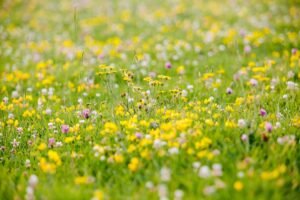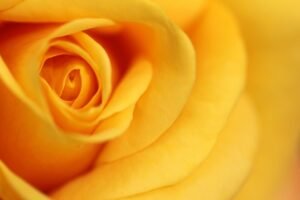Yellow flowers have long held significance in various cultures around the world. The color yellow is often associated with happiness, joy, and positivity. It is a color that can instantly brighten up a space and bring a sense of warmth and cheerfulness. In this article, we will explore the significance of yellow flowers in different cultures, delve into the psychology behind the color yellow, discuss the different shades of yellow in flowers and their meanings, and explore how yellow flowers can enhance your home and garden. We will also touch upon the symbolism of yellow flowers in weddings and other celebrations, their role in art and literature, their healing properties in traditional medicine, and their importance in supporting pollinators.
Key Takeaways
- Yellow flowers hold significant cultural symbolism across the world
- The color yellow is associated with happiness and positivity in psychology
- Different shades of yellow in flowers have varying meanings
- Yellow flowers can add brightness to homes and gardens
- Different yellow flowers are suited for different landscaping needs
The Significance of Yellow Flowers in Different Cultures
Yellow flowers hold different meanings and symbolism in various cultures. In Chinese culture, for example, yellow is associated with royalty and power. The chrysanthemum, which comes in various shades of yellow, is highly revered and symbolizes longevity and good luck. In Japan, the yellow iris is considered a symbol of courage and strength.
In Western cultures, yellow flowers are often associated with friendship and happiness. The sunflower, with its vibrant yellow petals, is a popular choice for expressing joy and positivity. In Mexico, marigolds are commonly used during the Day of the Dead celebrations to honor deceased loved ones. The bright yellow color of marigolds is believed to guide spirits back to their families.
The Psychology of Yellow: Why It’s a Happy Color
The color yellow has been scientifically proven to evoke feelings of happiness and positivity. It is often associated with sunshine, warmth, and energy. Yellow stimulates the production of serotonin in the brain, which is responsible for regulating mood and emotions. This is why being surrounded by yellow flowers can instantly uplift our spirits.
Yellow is also known to stimulate mental activity and creativity. It can enhance focus and concentration, making it an ideal color for workspaces and study areas. Additionally, yellow is believed to promote communication and social interaction, making it a great color for gathering spaces and social events.
The Different Shades of Yellow in Flowers and Their Meanings
| Shade of Yellow | Flower | Meaning |
|---|---|---|
| Pale Yellow | Daffodil | New beginnings, friendship |
| Butter Yellow | Buttercup | Optimism, happiness |
| Golden Yellow | Marigold | Success, prosperity |
| Mustard Yellow | Chrysanthemum | Support, loyalty |
| Lemon Yellow | Tulip | Cheerfulness, positivity |
Yellow flowers come in a wide range of shades, each with its own unique symbolism. Light yellow flowers, such as daffodils and buttercups, symbolize new beginnings and fresh starts. They are often associated with spring and the renewal of life.
Medium yellow flowers, like sunflowers and marigolds, represent joy, happiness, and friendship. These flowers are often given as gifts to express love and appreciation for someone’s presence in our lives.
Dark yellow flowers, such as goldenrod and daisies, symbolize wealth, success, and abundance. They are often used in celebrations and ceremonies to bring good fortune and prosperity.
How Yellow Flowers Can Brighten Up Your Home and Garden
Incorporating yellow flowers into your home and garden can instantly brighten up the space and create a cheerful atmosphere. Yellow flowers can be used as focal points in flower arrangements or as accents to complement other colors. They can be planted in gardens to add pops of color or used as border plants to create a vibrant edge.
Yellow flowers also have the ability to attract butterflies and other pollinators to your garden. Their bright color acts as a beacon, inviting these beneficial insects to visit and help with pollination.
The Best Yellow Flowers for Different Landscaping Needs

When choosing yellow flowers for your landscaping needs, it is important to consider their size, shape, and growth habits. For small spaces or containers, compact yellow flowers like pansies or marigolds are a great choice. They provide a burst of color without taking up too much space.
For larger areas or borders, taller yellow flowers like sunflowers or goldenrod can create a stunning visual impact. These flowers can add height and drama to your landscape.
The Symbolism of Yellow Flowers in Weddings and Other Celebrations
Yellow flowers are often used in weddings and other celebrations to symbolize happiness, joy, and friendship. They can be incorporated into bridal bouquets, centerpieces, and decorations to create a vibrant and cheerful atmosphere.
In Chinese weddings, yellow flowers are often used to symbolize the union of two families and the beginning of a new chapter in life. In Indian weddings, marigolds are considered auspicious and are used in various rituals and decorations.
The History of Yellow Flowers in Art and Literature
Yellow flowers have been depicted in art and literature throughout history. In Vincent van Gogh’s famous painting “Sunflowers,” the vibrant yellow petals symbolize vitality and happiness. In literature, yellow flowers are often used as symbols of hope, renewal, and beauty.
The Healing Properties of Yellow Flowers in Traditional Medicine
Yellow flowers have been used for centuries in traditional medicine for their healing properties. Calendula, for example, has anti-inflammatory and antiseptic properties and is often used to treat skin conditions such as rashes and burns.
Chamomile, another yellow flower, is known for its calming properties and is often used to promote relaxation and sleep. It is also used to soothe digestive issues and relieve menstrual cramps.
The Role of Bees and Other Pollinators in the Life Cycle of Yellow Flowers
Bees and other pollinators play a crucial role in the life cycle of yellow flowers. They help transfer pollen from the male parts of the flower to the female parts, allowing for fertilization and the production of seeds.
Without bees and other pollinators, many yellow flowers would not be able to reproduce. This is why it is important to create pollinator-friendly habitats by planting a variety of flowers that provide nectar and pollen throughout the year.
How to Care for and Preserve Yellow Flowers to Keep Them Blooming All Year Round
To keep yellow flowers blooming all year round, it is important to provide them with the proper care. This includes regular watering, fertilizing, and pruning. It is also important to protect them from pests and diseases by monitoring for any signs of damage and taking appropriate action.
To preserve yellow flowers for long-lasting enjoyment, they can be dried or pressed. Drying flowers involves hanging them upside down in a cool, dry place until they are completely dry. Pressing flowers involves placing them between sheets of absorbent paper and applying pressure until they are flattened.
Yellow flowers hold significant meaning in different cultures and have the power to evoke happiness and positivity. They come in a variety of shades, each with its own unique symbolism. Yellow flowers can brighten up your home and garden, enhance celebrations and events, inspire art and literature, provide healing properties in traditional medicine, support pollinators, and bring joy all year round. So next time you see a yellow flower, take a moment to appreciate its beauty and the significance it holds.
If you’re a fan of yellow flowers, you’ll love this article on Just Tidings that explores the beauty and symbolism behind these vibrant blooms. From sunflowers to daffodils, yellow flowers have long been associated with happiness, joy, and friendship. Discover the different types of yellow flowers and their meanings in this fascinating read. Check it out here!




















+ There are no comments
Add yours